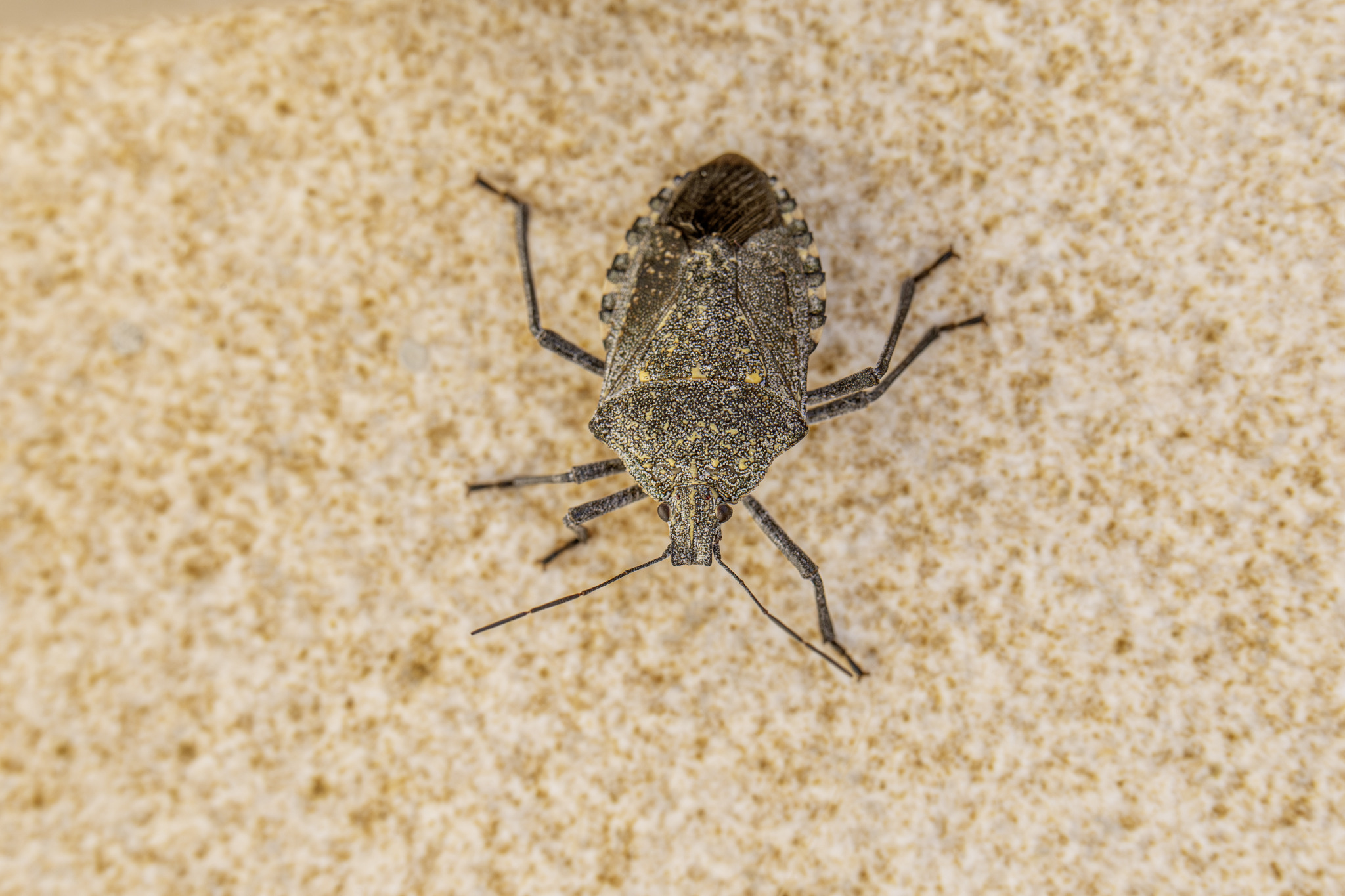The Almond Stink Bug (Apodiphus amygdali) is an agricultural pest known for its impact on almond crops. Here are some key details about this species:
Appearance
- Size: Adult Almond Stink Bugs are relatively large, typically measuring around 10-15 mm (0.4-0.6 inches) in length.
- Coloration: They have a distinctive shield-shaped body that is usually dark brown or black. The body is often marked with lighter spots or patterns, providing camouflage against tree bark and foliage.
- Shape: Their body is broad and flattened, typical of stink bugs, with a prominent scutellum (a triangular plate) extending over the abdomen.
Habitat
- Range: Apodiphus amygdali is primarily found in the Mediterranean region, including parts of Southern Europe, North Africa, and the Middle East.
- Environment: They are typically associated with almond orchards but can also be found on other fruit trees, including apricots, peaches, and plums.
Behavior
- Feeding: Almond Stink Bugs are phytophagous, feeding on the sap of various fruit trees. They use their piercing-sucking mouthparts to feed on the developing nuts and fruits.
- Damage: Feeding by these bugs causes direct damage to the nuts, leading to blemishes, deformities, and reduced market value. They can also cause the premature drop of fruits.
- Aggregation: These bugs often aggregate in large numbers, especially during the early stages of fruit development, making them a significant pest.
Life Cycle
- Reproduction: Mating typically occurs in the spring. Females lay clusters of eggs on the undersides of leaves or on the bark of trees.
- Eggs: The eggs are barrel-shaped and usually yellowish or greenish in color. They hatch into nymphs after about a week.
- Nymphs: The nymphs go through several instar stages, gradually developing into adults. Nymphs are usually smaller and lack fully developed wings.
- Adults: Adults overwinter in sheltered locations, such as under tree bark or in leaf litter, and emerge in the spring to resume feeding and reproduction.
Adaptations
- Camouflage: Their coloration and body shape help them blend into their surroundings, making them less visible to predators.
- Chemical Defense: Like other stink bugs, they can release a foul-smelling chemical from glands on their abdomen as a defense mechanism against predators.
Ecological Role
- Pest Status: While they play a role in their natural ecosystem, they are primarily known as pests due to their impact on agricultural crops. Their feeding habits can cause significant economic losses in almond orchards and other fruit tree plantations.
- Predators and Parasites: They have natural predators, including birds, spiders, and predatory insects. They can also be parasitized by certain wasps that lay eggs in their bodies.
Conservation
- Management: Effective management of Almond Stink Bug populations is crucial for protecting crops. Integrated Pest Management (IPM) strategies include monitoring populations, using pheromone traps, and applying targeted insecticides when necessary.
- Biological Control: Encouraging natural predators and parasitoids in orchards can help reduce stink bug populations. Habitat management to support these beneficial organisms is an important aspect of biological control.
The Almond Stink Bug (Apodiphus amygdali) is a significant pest for almond growers and poses challenges for agricultural management. Understanding its biology and behavior is essential for developing effective control measures to minimize its impact on crops.
Visited 872 times, 5 visit(s) today
Views: 1366
Subscribe to the newsletter:
